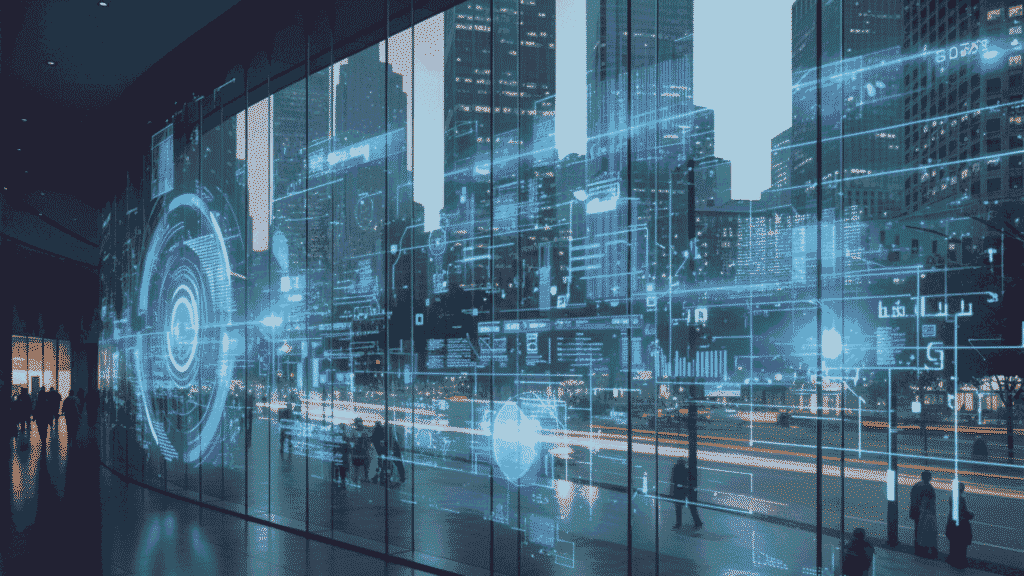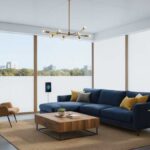In today’s world of modern design and innovation, projects across commercial, retail, and corporate sectors are embracing transparent LED glass as a centerpiece for transformation. This advanced technology merges digital displays with architectural glass, allowing spaces to communicate, advertise, and impress—all without compromising natural light or aesthetics.
Whether it’s a retail store in Delhi, a corporate office in Bengaluru, or a luxury hotel in Mumbai, transparent LED glass is being adopted for its ability to create futuristic and engaging environments. Glasstronn has been at the forefront of introducing cutting-edge glass solutions that seamlessly combine function with design. By working closely with architects, designers, and business owners, Glasstronn ensures that projects maximize the potential of transparent LED glass while aligning with each client’s vision.
What is Transparent LED Glass?
Transparent LED glass is a type of architectural glass that incorporates LED technology within its layers, allowing visuals, videos, and advertising content to be displayed directly on the glass surface. The glass remains transparent when not in use, ensuring visibility and natural light flow while also serving as a digital display when activated.
This technology has gained popularity across sectors because it merges two essential design requirements: transparency and communication.
Key features of transparent LED glass include:
- High transparency (60–95%) depending on design.
- Slim, lightweight panels that integrate easily into buildings.
- Brightness adjustment suitable for indoor and outdoor use.
- Energy-efficient LED technology.
- Flexible design options—curved, flat, or custom shapes.
Why Transparent LED Glass is Gaining Popularity
1. Modern Aesthetics
Businesses want to stand out, and transparent LED glass provides an ultra-modern look that leaves a lasting impression. It enhances the building façade or interiors with futuristic appeal.
2. Dual Functionality
Unlike traditional LED screens, transparent LED glass allows natural light to pass through, making it an ideal choice for offices, showrooms, and malls.
3. Energy Efficiency
LEDs consume less power compared to conventional displays, and the glass structure reduces the need for additional lighting during the day.
4. Brand Visibility
For retail spaces, transparent LED glass is a game-changer. It allows dynamic advertising while letting customers see inside the store, blending marketing with architectural design.
5. Customizable Design
Available in multiple sizes and configurations, it adapts to both large-scale commercial projects and boutique installations.
Applications of Transparent LED Glass
Transparent LED glass is versatile and can be applied in multiple settings, including:
- Retail Storefronts – To display promotions, videos, and advertisements while maintaining store visibility.
- Corporate Offices – For branding, announcements, and modern interior partitions.
- Hospitality & Hotels – To create luxury experiences in lobbies, restaurants, and event halls.
- Shopping Malls – For digital signage and creative advertising on façades.
- Event & Exhibition Spaces – For dynamic presentations, stage backdrops, or creative installations.
- Transportation Hubs – Airports and metro stations are increasingly using it for navigation, ads, and real-time updates.
Factors to Consider When Choosing Transparent LED Glass
Selecting the right transparent LED glass requires careful evaluation of project goals, budget, and environment. Here’s what to keep in mind:
1. Transparency Level
Different projects require different levels of transparency. For retail, higher transparency ensures customers can view interiors, while office partitions may use lower transparency for greater focus on content display.
2. Brightness & Display Quality
Outdoor installations in Kolkata or Mumbai will require higher brightness levels than indoor office partitions. Ensure the product adapts to ambient light conditions.
3. Panel Size & Shape
Consider whether your project needs large-scale glass walls, curved structures, or smaller panels. Customizable panels make it easier to achieve design goals.
4. Durability & Maintenance
Look for solutions with high-quality glass, robust LED chips, and easy cleaning options to ensure long-term performance.
5. Integration with Architecture
Transparent LED glass should complement the existing structure, not overpower it. Choose designs that blend seamlessly with the architectural flow.
6. Energy Consumption
Energy-efficient glass will not only reduce operational costs but also align with sustainability goals.
7. After-Sales Support
Installation and maintenance are critical. Work with a reliable partner who offers warranties, servicing, and technical assistance.
Advantages Over Traditional LED Screens
While traditional LED displays are still widely used, transparent LED glass provides distinct advantages:
- Less intrusive – Maintains visibility of interiors.
- More elegant – Looks like a part of the building design rather than an external add-on.
- Lightweight – Easier to install on existing structures.
- More versatile – Works for both functional and decorative purposes.
How Transparent LED Glass Enhances Customer Experience
Modern businesses know that customer experience drives brand loyalty. Transparent LED glass directly contributes to this by:
- Creating immersive experiences that capture attention instantly.
- Allowing real-time content updates, perfect for promotions or events.
- Offering a “wow factor” that makes customers remember the space.
- Supporting interactive applications, such as touch-enabled surfaces in high-end projects.
Sustainability and Smart Design
As Indian cities focus more on green building practices, transparent LED glass plays a vital role. By allowing natural light, reducing energy consumption, and combining multiple functions (advertising + design), it supports eco-friendly goals.
Some organizations even highlight their use of sustainable materials by working with the best switchable glass company in India, showcasing their commitment to modern and responsible architecture.
Future Trends in Transparent LED Glass
The future of transparent LED glass is exciting, with upcoming innovations such as:
- Integration with Augmented Reality (AR) – For more interactive experiences.
- AI-driven displays – Ads tailored to customer demographics in real time.
- Solar-powered panels – To further enhance sustainability.
- Thinner, more flexible glass – Allowing unique curved and 3D designs.
These advancements will make transparent LED glass an even more integral part of modern architecture.
Why Partnering with Experts Matters
Transparent LED glass requires precise installation and customization to achieve the desired effect. Working with an experienced provider ensures:
- High-quality materials.
- Custom design based on project requirements.
- Seamless integration with interiors.
- Long-term durability and service support.
Conclusion
Transparent LED glass is no longer just a trend—it is a powerful tool that transforms how businesses, offices, and retail spaces communicate and engage with their audience. From boosting brand visibility to enhancing sustainability, its applications are vast and versatile.
With its unmatched expertise in architectural glass solutions, Glasstronn is helping businesses and designers unlock the full potential of this technology. By combining innovation, functionality, and aesthetics, Glasstronn ensures that every project using transparent LED glass sets a benchmark for modern design.
Whether you are an architect, a retail brand, or a corporate office, investing in the right transparent LED glass can make your space truly future-ready.





